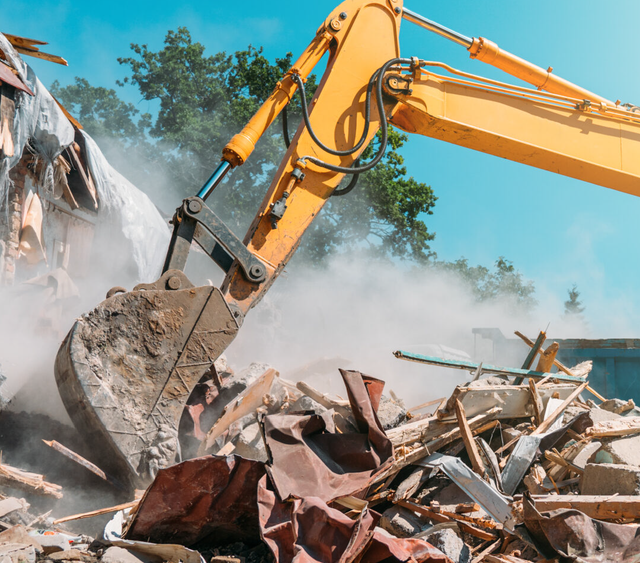Cost-Effective Solutions for Interior Demolition Services
Cost-Effective Solutions for Interior Demolition Services
Blog Article
The Ultimate Guide to Interior Demolition Techniques and Tools
Within the world of interior restorations, the art of demolition is a crucial stage that requires precision, skill, and the right collection of devices. Whether you are a skilled professional or a do it yourself enthusiast, comprehending the complexities of indoor demolition strategies can make all the distinction in attaining an effective task outcome. As we navigate via the subtleties of this comprehensive guide, we will uncover important tools, precaution, and expert techniques that are vital when getting started on the trip of changing a room. Remain tuned to find the vital understandings that can boost your demolition prowess to new heights.
Necessary Indoor Demolition Devices
When embarking on indoor demolition jobs, having the suitable devices is crucial for performance and safety and security. Among the most crucial devices for interior demolition is the demolition hammer. This heavy-duty device is created to appear challenging products like concrete, ceramic tile, and drywall. Its powerful hammering activity can rapidly knock down walls, floors, and other structures. In addition, a crowbar is indispensable for removing components, trim, and various other materials. Its utilize enables for the very easy extraction of nails and various other fasteners without harming the surrounding surfaces - interior demolition.
Its capability to make exact cuts in limited rooms makes it ideal for demolition work. Overall, having these vital indoor demolition tools will substantially boost the efficiency and safety of any demolition task.

Safety And Security Preventative Measures Throughout Demolition

Additionally, all employees entailed in the demolition process should obtain appropriate training on the appropriate handling of tools and tools to reduce crashes. By sticking to these security precautions, indoor demolition jobs can be carried out successfully while focusing on the well-being of all people included.
Techniques for Getting Rid Of Walls
Executing correct security precautions throughout indoor demolition jobs is important for creating a safe and secure workplace, and one key facet of such projects entails understanding methods for eliminating walls. One commonly utilized technique is manual demolition, which calls for making use of basic hand tools such as sledgehammers, crowbars, and energy blades to thoroughly take down the wall piece by item. This technique enables greater control over the demolition procedure, specifically in delicate areas where accuracy is important.
For bigger, extra complex wall surfaces, mechanical demolition may be required. This includes using heavy equipment like bulldozers or excavators to knock down walls effectively. Nonetheless, it is crucial to guarantee that the architectural honesty of the structure is not compromised during mechanical demolition.
Another technique for eliminating wall surfaces is deconstruction, where the wall surface is dismantled in a means that maintains multiple-use products. This lasting strategy is eco-friendly and can also help in reducing disposal costs. Whichever technique is employed, it is necessary to follow proper security methods and take into consideration the architectural effects of wall surface elimination to make sure a successful interior demolition project.
Removing Flooring Like a Pro
Effectively eliminating flooring throughout indoor demolition calls for the correct devices and strategies to make sure a effective and smooth process. The initial step in removing floor covering is to get rid of the location of any kind of furniture or obstacles. Next off, recognize the kind of flooring to identify the appropriate removal approach. For hardwood or laminate flooring, beginning by getting rid of the walls and afterwards utilize a flooring scrape to raise and review detach the slabs. Rug removal involves cutting the carpet right into manageable areas and rolling it up for disposal. For floor tile or plastic flooring, a sculpt or floor scraper can be used to pry up the sheets or ceramic tiles. It's necessary to wear safety gear such as handwear covers, safety glasses, and a mask to stop injuries and exposure to dirt and debris. In addition, having a dumpster or designated disposal location ready for the gotten rid of flooring products is important for keeping a clean job environment. By adhering to these strategies and utilizing the right tools, getting rid of flooring like a pro can be attained efficiently and successfully.
Proper Waste Disposal Techniques
After efficiently removing flooring making use of the appropriate tools and strategies, the following critical action in the indoor demolition procedure is applying correct garbage disposal methods. Correct garbage disposal is crucial for keeping a safe and clean workplace throughout and after demolition. Among the key techniques for waste disposal is segregating materials right into various classifications such as recyclable, dangerous, and basic waste. This segregation guarantees that materials are gotten rid of correctly and responsibly.

Specialists have to comply with local regulations concerning waste disposal to prevent penalties and charges. Utilizing professional waste management services can improve the disposal process and guarantee compliance with environmental guidelines. By executing appropriate garbage disposal approaches, indoor demolition jobs can be completed effectively and sustainably.
Conclusion
In final thought, check my source interior demolition needs the use of important devices and stringent safety preventative measures to make sure a risk-free and successful process. By following these standards, interior demolition can be finished properly and with very little threats.
One of the most vital tools for indoor demolition is the demolition hammer (interior demolition). Generally, having these important interior demolition devices will dramatically improve the efficiency and safety and security of any kind of demolition task
Efficiently getting rid of flooring throughout interior demolition needs the proper devices and techniques to informative post make sure a successful and smooth procedure.After efficiently removing flooring making use of the suitable devices and techniques, the following crucial step in the indoor demolition procedure is executing proper waste disposal approaches.In conclusion, interior demolition calls for the use of necessary devices and strict security preventative measures to make certain a successful and risk-free process.
Report this page